 |
Mark Schnitzer is Associate Professor of Biology and Applied Physics and is an Investigator of the Howard Hughes Medical Institute. His research concerns the innovation of novel optical imaging technologies and their use in the pursuit of understanding neural circuits. The Schnitzer lab has invented two forms of fiber-optic imaging, one- and two-photon fluorescence microendoscopy, which enable minimally invasive imaging of cells in deep brain tissues. The lab is further developing microendoscopy technology, studying how experience or environment alters neuronal properties, and exploring two different clinical applications. The group has also developed two complementary approaches to imaging neuronal and astrocytic dynamics in awake behaving animals. Much research focuses on cerebellum-dependent forms of motor learning. By combining imaging, electrophysiological, behavioral, and computational approaches, the lab seeks to understand cerebellar dynamics underlying learning, memory, and forgetting. Further work in the lab concerns neural circuitry in other mammalian brain areas such as hippocampus and neocortex, as well as the neural circuitry of Drosophila. |
 |
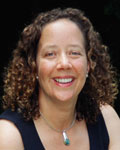 |
Annette Lewis
Scientific Project Manager |
CONTACT |
|
After completing postdoctoral research in neuroscience
at Stanford and Genentech, Inc., I worked as a scientist
and scientific manager at Entelos, Inc., working closely
with both biologists and engineers to build computer based
models of disease, including asthma and other inflammatory
diseases. I have returned to Stanford to apply principles
of scientific management to the work in the Schnitzer lab,
where innovation of new brain imaging modalities involves
detailed planning and coordination between several personnel
with distinct areas of expertise. I also help coordinate
our relationships with scientific corporations seeking
to translate our inventions into the marketplace. |
 |
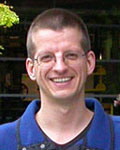 |
My early work in the Schnitzer lab concerned the invention of both one- and two-photon fluorescence microendoscopy. Now, as Operations Director I am coordinating multiple aspects of our internal research program and our interactions with industry. I continue to engage in research on microendoscopy and have recently focused on the creation of a microendoscope for imaging the human cochlea, in collaboration with Joan Savall. |
 |
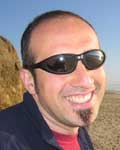 |
Alessio Attardo
Research Scientist |
CONTACT |
|
The hippocampus is a brain structure central for encoding of declarative memory, consolidation of long-term memory and recalling of stored memory. To date, because of its location the hippocampal formation has been inaccessible for in vivo imaging studies. My interest is in using our lab's in vivo microendoscopy imaging techniques to study the mechanisms by which memory is encoded and retrieved both at the cellular and at the network levels. |
 |
 |
Georg Dietzl
Research Scientist |
CONTACT |
|
My research focuses on the analysis of Drosophila foraging strategies, with the aim of identify their neurocomputational basis. Upon detecting attractive odors, suggesting the presence of a close-by food source, flies very efficiently track down that source. In order to obtain a detailed psychophysical description of flies' odor-tracking strategies, we are currently working on implementing machine-vision based tracking of fly trajectories during foraging. I am also interested in imaging the neural dynamics underlying these ecologically relevant computations. |
 |
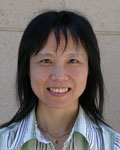 |
Jane Li
Life Science Research Assistant |
CONTACT |
|
I support the laboratory through a variety of research
activities involving histology, circuit tracing, genotyping,
husbandry, and surgery. |
 |
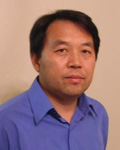 |
Jin Zhong Li
Director of Molecular Virology |
CONTACT |
|
I have extensive expertise designing and using viral vectors for biological research, including lentivirus, retrovirus, adenovirus, and AAVs. My background includes long experience in the biotechnology industry, including at Immune Design and Genentech, where I worked in support of the viral vector core facility. In the Schnitzer lab I will design novel cell and tissue specific vectors targeted to particular neurons in the brain. These vectors will be combined with electrophysiological and optogenetic techniques to explore neural circuitry and function in behaving animals. |
 |
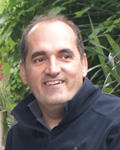 |
Joan Savall
Senior Scientist, HHMI |
CONTACT |
|
My research career began in medical robotics in the Department of Mechanical Engineering in KULeuven, Belgium. Subsequently, I was an Assistant Professor of Machine Theory at the University of Navarra and a Researcher in the Applied Mechanics Department at CEIT, Spain. I am a Consulting Assistant Professor in the Mechanical Engineering-Design Department at Stanford and have joined Prof. Schnitzer's laboratory to focus on the development of custom actuators to enhance surgeons’s use of our cochlear microendoscope. This project is a collaboration with Juergen Jung and Dr. Nikolas Blevins, a surgical otologist in Stanford’s Dept. of Otolaryngology. |
 |
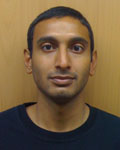 |
Supriyo Sinha
Senior Research Scientist |
CONTACT |
|
I obtained my doctorate from the Byer group at Stanford University in the area of high power lasers and nonlinear optics in 2007. I joined the Schnitzer group in January 2009 and am currently leading the effort to develop a system to simultaneously image the brains of dozens of awake, behaving fruit flies using two-photon microscopy. To address this challenge, we are developing laser microsurgery techniques to optically access the fly brains with minimal invasiveness, small-footprint opto-mechanical designs to allow for the construction of ~100 two-photon microscopes on a single optical table, and robotics to automate fly handling. In addition, we are building a novel ultrafast laser source to drive the massively parallel imaging system. The success of this project will allow scientists to attain a greater understanding of how neural circuits are formed and how they process information. |
 |
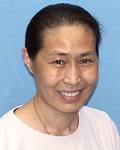 |
Yanping Zhang
Research Technician III, HHMI |
CONTACT |
|
I have more than ten years experience in molecular and cell biology with both laboratory and clinical experience, designing and constructing cloning and expression vectors for gene expression and regulation, performing mutagenesis, protein preparation, and DNA/RNA analysis. In the Schnitzer lab, I continue to work on molecular cloning and systematic viral production. |
| Postdoctoral
Scholars |
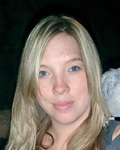 |
Shelley Batts
Postdoctoral Scholar |
CONTACT |
|
I completed my doctoral work with Dr. Yehoash Raphael at the University of Michigan, Kresge Hearing Research Institute, on the topic of cell signaling events involved in hair cell regeneration in mammals. My current focus in the Schnitzer lab is to create real-time images of hair cells and blood flow in the guinea pig cochlea, without damaging the cells of the inner ear or negatively impacting hearing. I'm using one- and two-photon fluorescence microendoscopy in the mammalian cochlea in conjunction with fluorescent dyes that label functional hair cells, active neurons, and blood vessels. |
 |
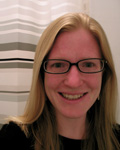 |
Maggie Carr
Postdoctoral Scholar |
CONTACT |
|
We have a remarkable ability to form memories of our everyday experiences and retrieve previously stored memories to guide our actions. My research focuses on understanding how activity in spatially distributed neural circuits can support both the encoding of relevant information and the retrieval of stored associations to guide behavior. |
 |
 |
Yiyang Gong
Postdoctoral Scholar |
CONTACT |
|
I'm interested in developing novel imaging techniques for investigating various biological phenomena. I will focus on improving the spatial and temporal resolution of optical imaging in order to enhance the study of neural activity. |
 |
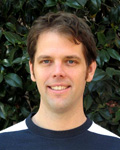 |
Benjamin Grewe
Postdoctoral Scholar |
CONTACT |
|
Understanding the underlying principles of neuronal circuit dynamics in the intact brain remains challenging. With a background in biophysics/neuroscience I am interested in developing new optical and electrical techniques to probe and manipulate the activity of neuronal cell ensembles in living animals. A goal of my research is to directly correlate neuronal activity to the animal's behavior. |
 |
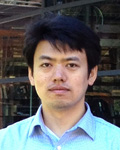 |
Cheng Huang
Postdoctoral Scholar |
CONTACT |
|
As a graduate student with Dr. Yi Zhong at Tsinghua University, I studied the molecular and cellular basis of olfactory long-term memory in Drosophila. In the Schnitzer lab, I will use a variety of approaches to dissect the neural circuitry underlying adaptive behavior of Drosophila. I am also involved in the effort to create massively parallel, high-throughput brain imaging technologies.
|
 |
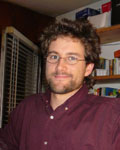 |
Jerome Lecoq
Postdoctoral Scholar |
CONTACT |
|
The limited depth penetration of current two-photon imaging techniques makes it difficult to assess the involvement of deeper nuclei in sensory processing. I am interested in using the laboratory’s recent developments in microendoscopy imaging techniques to bring into focus the role of deeper brain areas during sensory processing. |
 |
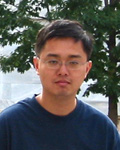 |
I studied microelectronics as an undergraduate at Tsinghua University in China, and then did my Ph.D. in neuroscience at Harvard University, where I performed a connectomic analysis of the mouse neuromuscular system. My current research interest is to develop and apply optical imaging tools to study neural circuits in the fruit fly. |
 |
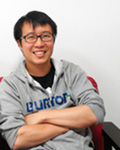 |
Cheng-Hsun Wu
Postdoctoral Scholar |
CONTACT |
|
I am interested in developing new technologies for imaging large-scale brain activity. With the knowledge in physics and instrumentation that I acquired during my PhD at MIT, I hope to shed light on previously inaccessible questions in modern neuroscience. |
 |
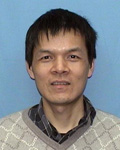 |
Bin Zhang
Postdoctoral Scholar |
CONTACT |
|
I am interested in how the anatomy and connectivity of neural circuits shape neural dynamics. The Schnitzer lab has recently developed powerful new technologies for imaging the activity of >1000 individual neurons at a time in the brains of freely behaving mice, and I am developing approaches to understand the observed patterns of activity in the context of the underlying neural circuits.
|
 |
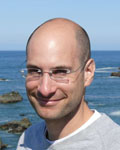 |
Yaniv Ziv
Postdoctoral Scholar |
CONTACT |
|
The hippocampus contains different types of neurons that act in concert to enable learning and memory. In my research I am applying transgenic mouse tools and novel microendoscopy-based imaging techniques to investigate how experience affects structural and functional interactions between different types of hippocampal cells in vivo. |
| Graduate
Students |
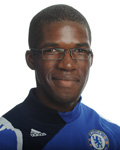 |
Biafra Ahanonu
Graduate Student |
CONTACT |
|
I am interested in investigating neural circuit activity and learning in freely behaving mice using the miniature, integrated microscope technology that our lab has developed. I grew up in Arizona and then journeyed to Boston for my undergraduate training at MIT, where I studied neuroscience and biology. |
 |
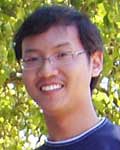 |
Eric Tattwei Ho
Graduate Student |
CONTACT |
|
My primary interest lies in extending the capabilities of
fluorescence imaging techniques such as exploring new ways
to image faster and deeper. |
 |
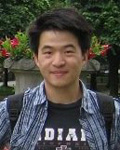 |
Tony Hyun Kim
Graduate Student |
CONTACT |
|
I am drawn to neural computation as a potential foil to modern high-performance computing architectures and algorithms. I am working towards new instrumentation for two-photon brain imaging. I did my undergraduate work in EECS and physics at MIT. |
 |
 |
Lacey Kitch
Graduate Student |
CONTACT |
|
I am interested in neural computation and in the development of tools that will allow us to better observe and analyze computational processes in living brains. My work draws on my background in Electrical Engineering, Physics, and Neuroscience. |
 |
 |
Jesse Marshall
Graduate Student |
CONTACT |
|
My work attempts to create optical tools towards understanding the structure and dynamics of neural circuitry in living animals and humans. These efforts draw on my longstanding passion for physics and involve broad collaboration within the Stanford scientific community. |
 |
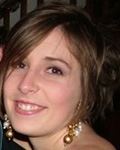 |
Elizabeth Otto
Graduate Student |
CONTACT |
|
I am interested in the development and improvement of devices used for in vivo neural imaging in freely moving animals. My current work draws on my background in biophysics and optics and is aimed at creating miniaturized fiber-optic fluorescence microscopes. |
 |
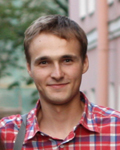 |
Oleg Rumyantsev
Graduate Student |
CONTACT |
|
My current research is aimed at development of a novel fluorescent
microscope for in vivo imaging of neural activity. The challenges of my work are at the interface between physics,
engineering and neuroscience. |
 |
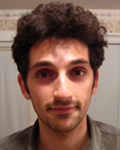 |
Mark Wagner
Graduate Student |
CONTACT |
|
I'm interested in the neural computations underlying motor learning and motor control, and I am studying these topics in behaving mice using our lab's techniques for brain imaging in actively moving animals. |
 |
 |
 |
I am interested in using optical tools to study circuit dynamics in awake behaving animals. My research draws on my background in neuroscience and bioengineering.
|
 |
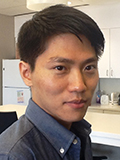 |
Seung Je Woo
Graduate Student |
CONTACT |
|
I am interested in developing technologies that will lead to a better understanding of neural circuits in Drosophila. For the massively parallel brain imaging project, I am developing machine-vision capable robotics for manipulating the fruit flies and compact two-photon microscopes for parallel, high-throughput imaging. |
 |
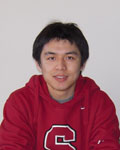 |
Tong Zhang
Graduate Student |
CONTACT |
|
My work focuses on the mechatronic and optomechanical challenges involved in the massively parallel brain imaging project, as well as in the design of the lab’s tiny, portable microscopes in the 1-3 gram range. |